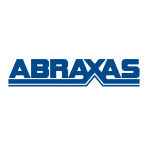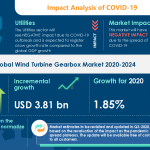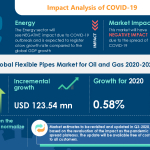DALLAS--(BUSINESS WIRE)--Flowserve Corporation (NYSE: FLS), a leading provider of flow control products and services for the global infrastructure markets, today announced that its board of directors has elected Carlyn Taylor as an independent director and a member of the Audit Committee and the Corporate Governance & Nominating Committee of the board.


Ms. Taylor, 52, has more than 30 years of experience involving strategy and business transformation, capital allocation, capital markets and other transaction-related services. At FTI Consulting, Inc., a Washington, D.C.-based global business advisory firm listed on the New York Stock Exchange, in addition to serving as a member of FTI Consulting’s Executive Committee, Ms. Taylor is the Global Co-Leader of the Corporate Finance segment, leader of the Business Transformation and Transactions practices, and Chairperson of FTI Capital Advisors, FTI Consulting’s investment banking subsidiary. Ms. Taylor is widely recognized for her industry expertise in telecom, media and technology, as well as in industrials, energy, retail and healthcare, among other sectors.
Ms. Taylor’s leadership of the Business Transformation and Transactions practices within the Corporate Finance segment has been instrumental in extending FTI Consulting’s core restructuring and turnaround capabilities by partnering with healthy companies to drive operational excellence, reduce complexity, expand margins, increase capital efficiency and accelerate growth. Ms. Taylor’s leadership of FTI Consulting’s diversified product offering of business transformation and transaction-related services has been critical in driving record financial performance and headcount growth at FTI Consulting. "Carlyn brings to this role an extensive background in corporate strategy, finance and accounting, most notably leveraging her expertise in capital allocation strategies and capital markets to help businesses spearhead transformative initiatives,” said Roger Fix, chairman of the Flowserve board of directors. “The board looks forward to the addition of her expertise and insight as we continue to support the evolution of Flowserve through its Flowserve 2.0 initiatives.”
“The expertise that Carlyn brings from her years of leadership in multiple roles at FTI Consulting will serve us well as we continue to execute on our multi-year Flowserve 2.0 initiatives.” said Scott Rowe, Flowserve president and chief executive officer. “Building the Flowserve of the future requires both operational progress and a board with the strategic foresight to support our vision. The Flowserve executive leadership team and I look forward to leveraging Carlyn’s relevant experience as we continue to drive our long-term strategy, even in these unprecedented times.”
Ms. Taylor holds a B.S. and an M.A. in economics from the University of Southern California, where she graduated as valedictorian. She is a Certified Public Accountant in Colorado and holds investment banking licenses and is a registered general securities principal with FINRA.
“I’m pleased to join the Flowserve board of directors during such a transformative period in the company’s 200-year history,” said Ms. Taylor. “Based on the results of the Flowserve 2.0 transformation initiative to date, the organization is clearly committed to driving enterprise-wide transformation on its journey towards becoming the industry’s fluid motion and control leader through its focus on the customer experience, employee engagement and shareholder value.”
About Flowserve
Flowserve Corp. is one of the world’s leading providers of fluid motion and control products and services. Operating in more than 50 countries, the company produces engineered and industrial pumps, seals and valves as well as a range of related flow management services. More information about Flowserve can be obtained by visiting the company’s Web site at www.flowserve.com.
Safe Harbor Statement: This news release includes forward-looking statements within the meaning of Section 27A of the Securities Act of 1933 and Section 21E of the Securities Exchange Act of 1934, which are made pursuant to the safe harbor provisions of the Private Securities Litigation Reform Act of 1995, as amended. Words or phrases such as, "may," "should," "expects," "could," "intends," "plans," "anticipates," "estimates," "believes," "forecasts," "predicts" or other similar expressions are intended to identify forward-looking statements, which include, without limitation, earnings forecasts, statements relating to our business strategy and statements of expectations, beliefs, future plans and strategies and anticipated developments concerning our industry, business, operations and financial performance and condition.
The forward-looking statements included in this news release are based on our current expectations, projections, estimates and assumptions. These statements are only predictions, not guarantees. Such forward-looking statements are subject to numerous risks and uncertainties that are difficult to predict. These risks and uncertainties may cause actual results to differ materially from what is forecast in such forward-looking statements, and include, without limitation, the following: the impact of the global outbreak of COVID-19 on our business and operations; a portion of our bookings may not lead to completed sales, and our ability to convert bookings into revenues at acceptable profit margins; changes in global economic conditions and the potential for unexpected cancellations or delays of customer orders in our reported backlog; our dependence on our customers’ ability to make required capital investment and maintenance expenditures; if we are not able to successfully execute and realize the expected financial benefits from our strategic transformation and realignment initiatives, our business could be adversely affected; risks associated with cost overruns on fixed-fee projects and in taking customer orders for large complex custom engineered products; the substantial dependence of our sales on the success of the oil and gas, chemical, power generation and water management industries; the adverse impact of volatile raw materials prices on our products and operating margins; economic, political and other risks associated with our international operations, including military actions, trade embargoes, epidemics or pandemics or changes to tariffs or trade agreements that could affect customer markets, particularly North African, Russian and Middle Eastern markets and global oil and gas producers, and non-compliance with U.S. export/re-export control, foreign corrupt practice laws, economic sanctions and import laws and regulations; increased aging and slower collection of receivables, particularly in Latin America and other emerging markets; our exposure to fluctuations in foreign currency exchange rates, including in hyperinflationary countries such as Venezuela and Argentina; our furnishing of products and services to nuclear power plant facilities and other critical processes; potential adverse consequences resulting from litigation to which we are a party, such as litigation involving asbestos-containing material claims; expectations regarding acquisitions and the integration of acquired businesses; our relative geographical profitability and its impact on our utilization of deferred tax assets, including foreign tax credits; the potential adverse impact of an impairment in the carrying value of goodwill or other intangible assets; our dependence upon third-party suppliers whose failure to perform timely could adversely affect our business operations; the highly competitive nature of the markets in which we operate; environmental compliance costs and liabilities; potential work stoppages and other labor matters; access to public and private sources of debt financing; our inability to protect our intellectual property in the U.S., as well as in foreign countries; obligations under our defined benefit pension plans; our internal control over financial reporting may not prevent or detect misstatements because of its inherent limitations, including the possibility of human error, the circumvention or overriding of controls, or fraud; the recording of increased deferred tax asset valuation allowances in the future or the impact of tax law changes on such deferred tax assets could affect our operating results; our information technology infrastructure could be subject to service interruptions, data corruption, cyber-based attacks or network security breaches, which could disrupt our business operations and result in the loss of critical and confidential information; ineffective internal controls could impact the accuracy and timely reporting of our business and financial results; and other factors described from time to time in our filings with the Securities and Exchange Commission.
All forward-looking statements included in this news release are based on information available to us on the date hereof, and we assume no obligation to update any forward-looking statement.
The Company reports its financial results in accordance with U.S. generally accepted accounting principles (GAAP). However, management believes that non-GAAP financial measures which exclude certain non-recurring items present additional useful comparisons between current results and results in prior operating periods, providing investors with a clearer view of the underlying trends of the business. Management also uses these non-GAAP financial measures in making financial, operating, planning and compensation decisions and in evaluating the Company's performance. Throughout our materials we refer to non-GAAP measures as “Adjusted.” Non-GAAP financial measures, which may be inconsistent with similarly captioned measures presented by other companies, should be viewed in addition to, and not as a substitute for, the Company’s reported results prepared in accordance with GAAP.

Contacts
Investor Contacts:
Jay Roueche, Vice President, Investor Relations & Treasurer (972) 443-6560
Mike Mullin, Director, Investor Relations (972) 443-6636
Media Contact:
Lars Rosene, Vice President, Corporate Communications & Public Affairs (972) 443-6644

















